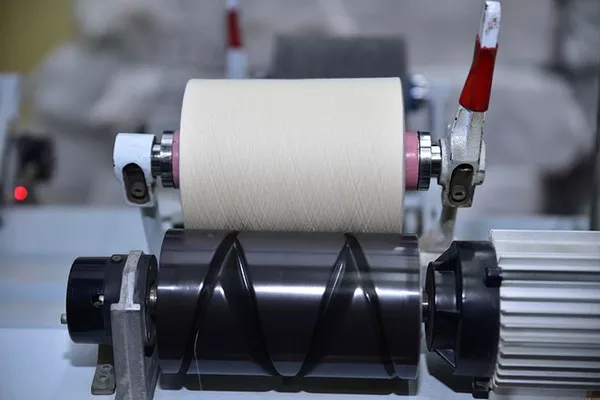As the global population continues to grow and urbanization expands, the issue of wastewater management has become increasingly critical. Wastewater treatment plants play a vital role in safeguarding public health, protecting the environment, and ensuring the sustainable use of water resources. This article offers an in-depth exploration of how wastewater treatment plants work, breaking down the complex processes involved in transforming contaminated water into clean, safe effluent.
The Purpose of Wastewater Treatment
Wastewater, often generated from domestic, industrial, and commercial activities, contains a mix of pollutants, contaminants, and organic matter. Discharging untreated wastewater directly into rivers, lakes, or oceans can have dire consequences for aquatic ecosystems, human health, and the environment. Wastewater treatment plants serve as a barrier between human activity and the natural environment, purifying wastewater before it re-enters the ecosystem.
Key Processes in Wastewater Treatment Plants
1. Preliminary Treatment:
The journey of wastewater treatment begins with preliminary treatment. In this stage, large debris, such as sticks, leaves, and plastics, are removed to prevent clogs and damage to downstream equipment. Screens and mechanical rakes are commonly used to filter out these larger particles.
2. Primary Treatment:
During primary treatment, the wastewater is allowed to settle in large sedimentation tanks. This process allows heavier particles, including sand, grit, and suspended solids, to settle at the bottom. The resulting sludge is removed, while the partially treated effluent moves on to the next phase.
3. Secondary Treatment:
Secondary treatment focuses on the biological breakdown of organic matter present in the wastewater. Microorganisms, including bacteria and protozoa, are introduced to the effluent in aeration tanks. These microorganisms feed on the organic materials, breaking them down into simpler substances through the process of aeration and agitation. This stage results in the production of sludge and treated water.
4. Tertiary Treatment:
Tertiary treatment involves additional polishing of the effluent to remove remaining contaminants and improve water quality further. Advanced filtration techniques such as sand filtration, chemical coagulation, and even disinfection with chlorine or ultraviolet light are employed. This ensures that any remaining particles, pathogens, and nutrients are effectively removed before discharge.
5. Disposal or Reuse:
The final step in the wastewater treatment process involves the decision of what to do with the treated water. Depending on local regulations and water scarcity concerns, the treated water might be released into a nearby water body, infiltrated into the ground, or even recycled for non-potable purposes like irrigation or industrial processes.
The Technology Behind Wastewater Treatment
Wastewater treatment plants utilize a combination of physical, biological, and chemical processes to achieve their objectives. Advanced technologies have revolutionized the efficiency and effectiveness of these plants. Automated systems, real-time monitoring, and computer simulations help operators optimize processes and respond to changes in influent quality.
Environmental Impact and Benefits
The importance of wastewater treatment plants extends beyond protecting the environment. Properly treated wastewater contributes to water conservation by reducing the demand on freshwater sources. Furthermore, the recovery of biogas from wastewater treatment processes can provide a renewable energy source. By minimizing pollution of water bodies and soil, wastewater treatment plants also play a key role in preserving biodiversity and ecosystem health.
Challenges and Future Directions
While wastewater treatment plants are a cornerstone of sustainable development, they face challenges such as outdated infrastructure, increasing wastewater volumes, and emerging contaminants like pharmaceuticals and microplastics. Addressing these challenges requires ongoing research, technological innovation, and policy adjustments to ensure that wastewater treatment continues to meet evolving environmental and health standards.
FAQs: Wastewater Treatment Plants
1. What happens to the waste collected during wastewater treatment?
The waste collected during wastewater treatment, known as sludge, undergoes further processing. This can involve digestion to break down organic matter, followed by dewatering to reduce its volume. Depending on the composition of the sludge, it may be incinerated, landfilled, or used beneficially in agriculture as a soil conditioner.
2. How are emerging contaminants like pharmaceuticals removed from wastewater?
Emerging contaminants, including pharmaceuticals and microplastics, present unique challenges to wastewater treatment. Advanced treatment methods, such as ozonation and activated carbon filtration, are effective in removing these substances from wastewater. Research is ongoing to develop more efficient techniques to tackle emerging contaminants.
3. Are there differences in wastewater treatment processes between developed and developing countries?
Yes, there can be significant differences in wastewater treatment processes between developed and developing countries. Developed countries often have more advanced infrastructure and resources to implement comprehensive treatment processes, while developing countries may rely on simpler methods due to limitations in funding and technology.
4. Can treated wastewater be used for drinking purposes?
While treated wastewater can meet stringent water quality standards, using it for direct drinking purposes (potable reuse) is a complex decision that involves considerations of public perception, health risks, and regulatory approval. Treated wastewater is more commonly used for non-potable purposes like irrigation, industrial processes, and environmental replenishment.
5. How does climate change impact wastewater treatment plants?
Climate change can impact wastewater treatment plants in various ways. Changes in precipitation patterns can affect the volume and strength of wastewater entering the plant. Rising temperatures can impact the efficiency of biological processes. Additionally, sea-level rise can threaten the infrastructure of coastal treatment plants, requiring adaptation measures to ensure continued functionality.
Conclusion
Wastewater treatment plants are unsung heroes of modern society, ensuring that our water resources remain clean and safe for generations to come. By employing a multi-stage approach that encompasses physical, biological, and chemical processes, these facilities turn contaminated wastewater into a valuable resource. As technology advances and our understanding of environmental sustainability deepens, wastewater treatment plants will continue to evolve, shaping a future where clean water is a shared and protected treasure.

